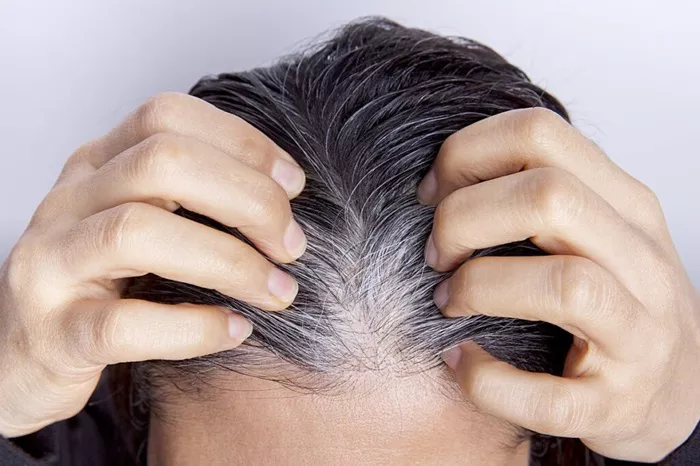Hair loss can be a distressing experience for many, but it’s essential to differentiate between normal shedding and a potential underlying issue. This article will guide you through the signs of hair loss that warrant concern, potential causes, and when to seek professional help.
Hair is often associated with beauty and confidence, so experiencing hair loss can lead to anxiety and self-esteem issues. While it’s normal to lose some hair daily, excessive loss can signal a problem. Understanding the difference between typical hair shedding and concerning hair loss is crucial.
Understanding Hair Loss
The Normal Hair Shedding Process
On average, individuals lose about 50 to 100 strands of hair daily. This is part of the natural hair growth cycle, which consists of three phases:
Anagen Phase: The active growth phase, lasting several years.
Catagen Phase: The transitional phase, lasting a few weeks, where growth stops.
Telogen Phase: The resting phase, lasting several months before hair falls out.
If you notice more hair in your brush or on your pillow, it’s essential to assess whether this is within the normal range or if it exceeds typical shedding.
Types of Hair Loss
Hair loss can be categorized into several types, including:
Androgenetic Alopecia: Commonly known as male or female pattern baldness, characterized by gradual thinning.
Alopecia Areata: An autoimmune condition causing sudden hair loss in patches.
Telogen Effluvium: Temporary hair loss due to stress, illness, or hormonal changes.
Traction Alopecia: Hair loss due to hairstyles that pull on the hair, such as tight ponytails.
Understanding the type of hair loss you are experiencing can help identify the underlying cause.
When to Worry About Hair Loss
1. Excessive Shedding
If you notice a significant increase in hair fall beyond the typical daily loss, it may be time to investigate. Look for:
Hair Clumps: Finding large clumps of hair in your brush or shower drain.
Thinning Areas: Noticing bald patches or areas where hair is noticeably thinner.
2. Changes in Hair Texture
A sudden change in hair texture, such as hair becoming brittle, coarse, or lifeless, can signal a problem. Pay attention to:
Dryness: Hair feels dry and straw-like despite using conditioners.
Breakage: Increased breakage or split ends may indicate underlying issues.
3. Scalp Health
Changes in scalp health can impact hair loss. Be mindful of:
Itching or Irritation: Persistent itching or discomfort may suggest a scalp condition.
Redness or Inflammation: Signs of infection or inflammation can lead to hair loss.
4. Family History
A family history of hair loss can indicate a genetic predisposition. If relatives have experienced significant hair thinning or baldness, consider:
Early Signs: Monitoring your hair for early signs of thinning.
Seeking Professional Advice: Consulting a dermatologist if you notice changes.
5. Sudden or Patchy Hair Loss
If you experience sudden or patchy hair loss, it could indicate a more serious condition, such as:
Alopecia Areata: Sudden loss of hair in patches.
Scarring Alopecia: Hair loss due to inflammation that can lead to permanent damage.
6. Accompanying Symptoms
Hair loss accompanied by other symptoms may indicate an underlying health issue. Watch for:
Weight Changes: Sudden weight gain or loss can impact hair health.
Fatigue: Persistent tiredness may suggest a nutritional deficiency or other health concern.
Skin Changes: Rashes or other skin issues can point to an autoimmune disorder.
Potential Causes of Hair Loss
Understanding the potential causes of hair loss can help in identifying when to seek help. Common causes include:
1. Nutritional Deficiencies
A lack of essential nutrients can lead to hair loss. Key nutrients include:
Iron: Low iron levels can cause hair to fall out.
Vitamin D: Deficiencies in vitamin D are linked to hair thinning.
Biotin: Important for hair health, a lack of biotin can lead to shedding.
2. Hormonal Changes
Hormonal fluctuations can significantly impact hair growth. Conditions such as:
Pregnancy: Hormonal changes during pregnancy can initially cause hair to thicken, followed by shedding postpartum.
Menopause: Hormonal changes during menopause often lead to hair thinning.
3. Stress
High stress levels can trigger hair loss through conditions such as telogen effluvium. Stress can be caused by:
Emotional Trauma: Significant life events can lead to increased shedding.
Physical Stress: Illness or surgery can also trigger hair loss.
4. Medical Conditions
Certain medical conditions can lead to hair loss, including:
Thyroid Disorders: Both hypothyroidism and hyperthyroidism can result in hair thinning.
Autoimmune Diseases: Conditions like lupus or alopecia areata can affect hair growth.
When to Seek Professional Help
1. Persistent or Progressive Hair Loss
If you notice ongoing hair loss that doesn’t improve with time, it’s essential to seek help. A dermatologist can assess your condition and recommend treatment options.
2. Diagnosis of Underlying Conditions
If your hair loss is accompanied by other health issues, consult a healthcare professional for a comprehensive evaluation.
3. Seeking Treatment Options
If you are concerned about the appearance of your hair, consider discussing treatment options, including:
Topical Treatments: Minoxidil and other topical applications can stimulate hair growth.
Oral Medications: Prescription medications may help in specific cases of hair loss.
Hair Restoration Procedures: Options such as hair transplants may be discussed based on the severity of the loss.
Conclusion
Hair loss can be a complex issue influenced by various factors, including genetics, health, and lifestyle. Understanding when to worry about hair loss is crucial for taking the right steps to address the problem. If you notice excessive shedding, changes in hair texture, or accompanying symptoms, seeking professional advice is essential.
Related topics:
- Telogen Effluvium: When It Starts and What to Expect
- What Is the Best Hair Restoration Method
- How to Prevent Hair Fall in Summer?


